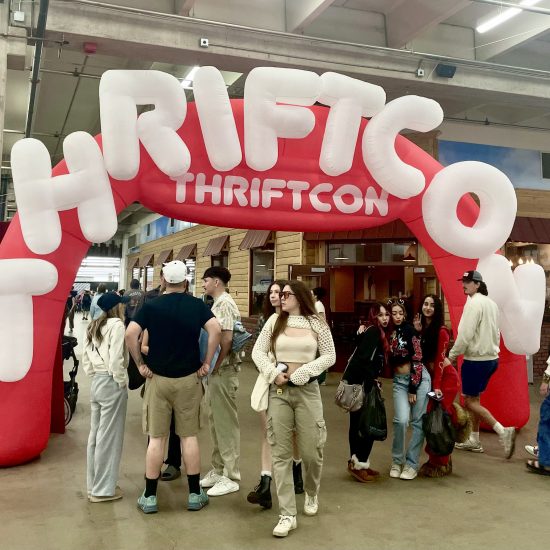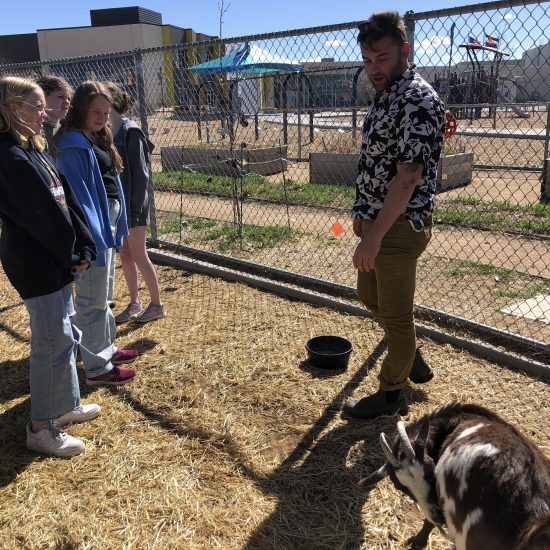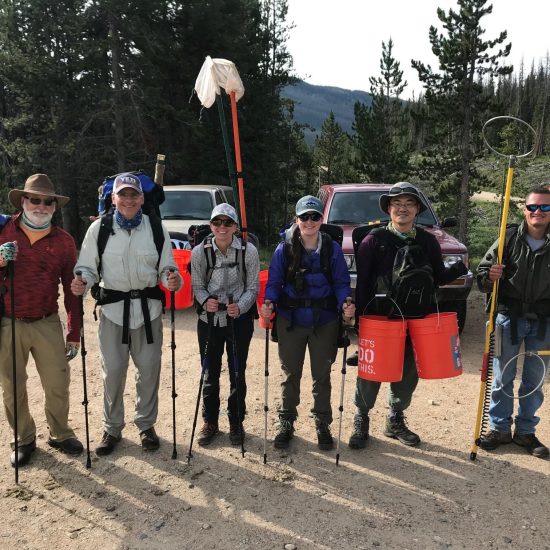
With Earth Day just around the corner, it’s important to consider how Denverites can benefit our environment. Helping friendly neighborhood pollinators is a great place to start, especially as bee populations are declining globally. Humans often fear the little winged insects due to learned behavior or previous negative experiences. But without them and other pollinators, our natural world and dinner plates would look very different.
Denverite Elizabeth Bingert started her pollinator-friendly garden when she first moved into her house in Sunnyside. Before that, her backyard was an “overgrown mess.” A gardening enthusiast, Bingert was inspired to start anew, planting a variety of perennials and vegetables to support the native pollinators in her area.
“Anytime you have more of the native bees, and other insects that are also pollinators, it just creates a healthier environment for everyone,” Bingert said.


Colorado is home to a large and diverse community of pollinators, including 946 species of bees, 250 types of butterflies, over 1000 different moths, 11 kinds of migrating hummingbirds and various wasps, beetles and flies. Although several of these pollinators may be less glamorous than those we traditionally think of as garden bugs, they are nonetheless environmentally important. Many of these species—including most native bees and beetles—nest underground or in the soil. Bingert suggested leaving leaf and garden debris until May to avoid disturbing overwintering insects. The gardener also suggested providing plenty of native plants, like pitcher sage, bee balm and milkweed that bloom at various times over the season.
“It’s good to have a variety of native plants so something can be blooming earlier in the year that would be a good food source for the bees and have some plants that flower more in the fall,” Bingert said.
Bees are an integral part of the environment, ensuring plants produce fruit and reproduce for years to come. They also ensure grasslands stay species-rich and diverse by improving soil health. Over 90% of the world’s bee species are solitary, many of which reside underground.
“Bees are incredibly important pollinators. They’re probably the biggest pollinator, especially solitary bees in Colorado,” said Butterfly Pavilion employee Ivy Renner.
According to a 2017 report by the Center for Biological Diversity, nearly one in four North American bee species are at risk of extinction. The same year, a particularly important species— the rusty patched bumblebee—was listed as endangered under the Endangered Species Act. Rusty patched bumblebees are crucial pollinators for crops like blueberries and cranberries and are one of the only insect pollinators of tomatoes.


But bees aren’t the only insect pollinators under threat. The monarch butterfly is on the edge of extinction, facing a devastating population decline. Two lesser-known species—the Taylor’s checkerspot and the mardon skipper—are also at risk. One of the main culprits of this endangerment is pesticides, which kill off beneficial insects beyond their targets. Disease, loss of habitat and biodiversity, and climate change are also significant contributing factors.
“Butterflies are super important to the environment all over the world, not just here in Colorado. They are pollinators, which gives us one in every three bites of food we eat,” Renner said.
That leads many to ask, what can we do to help pollinators thrive?
“Citizens can help by increasing the biodiversity on their own land,” said Paige Mulhern from Best Bees Company. “Whether that’s planting more diverse flowers or focusing in on native species that attract local and native pollinators.”
Experts suggest planting native flowering plants that are already adapted to local soils and climate, requiring little to no irrigation and fertilizers. They also recommend planting in full sun, providing a variety of plants that bloom at different times and planting in groups instead of scattering throughout the landscape. Arguably the most important is ditching harmful insecticides and pesticides. Removing pesticides from your garden will allow bees to flourish and stay alive.

Folks can also go beyond their backyard and get involved in local and state politics.
“Partake in local activism and [get] into the different local policies that might be emerging around pesticide use,” Mulhern said.
Crops like fruits and vegetables rely on butterflies and bees to pollinate plants. Although the monarch butterfly and the rusty patched bumble bee are at risk of extinction, there is still time to help out these native species. While you are celebrating Earth Day this Monday, consider planting some flowers in your garden or avoiding the use of pesticides so these pollinators can keep buzzing and flying.
“Bees help with the reproduction of essential plants and trees that capture carbon, so it’s really a whole ecosystem of large, positive impact that pollinators have on the biodiversity of our planet and our food systems,” Mulhern said.
How have you helped Colorado’s pollinators? let us know in the comments!






